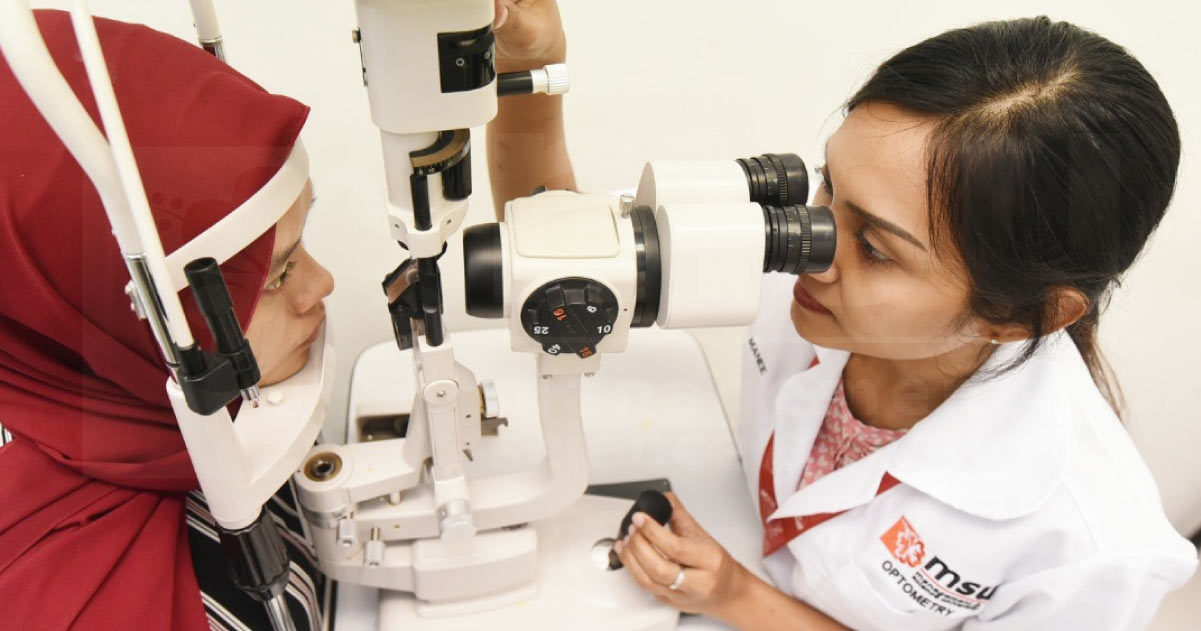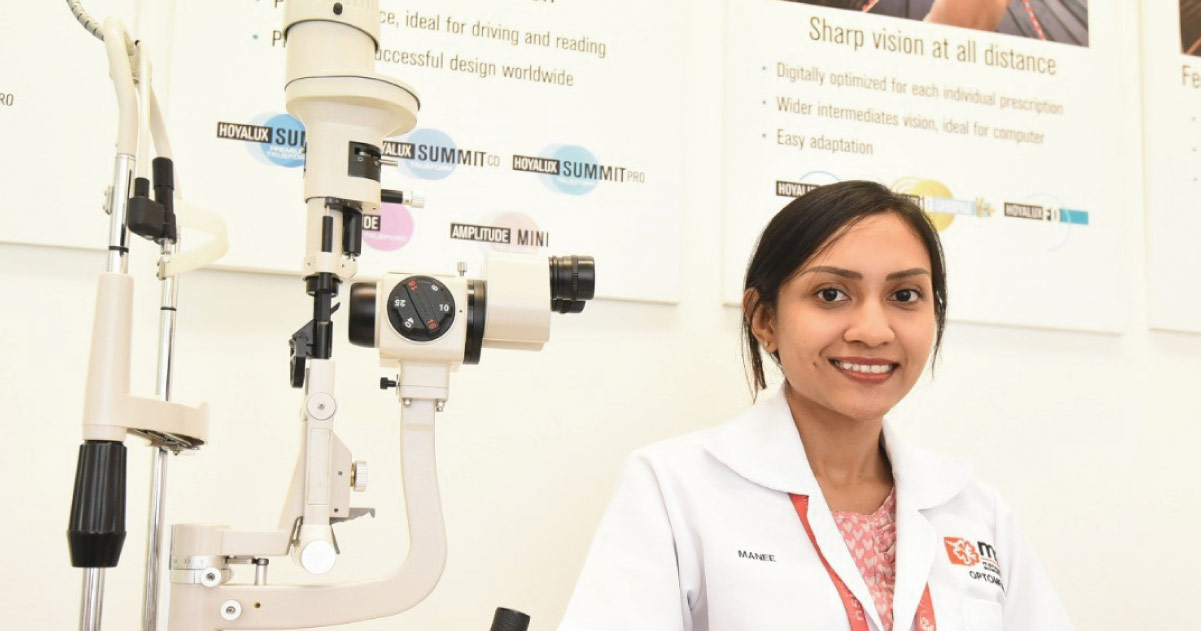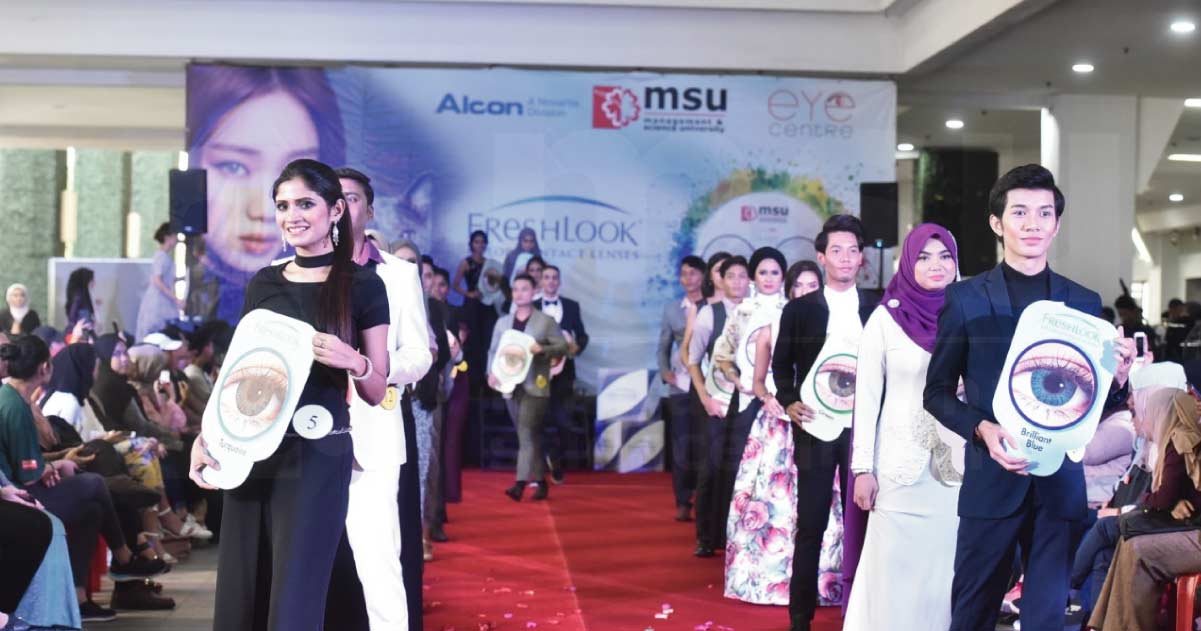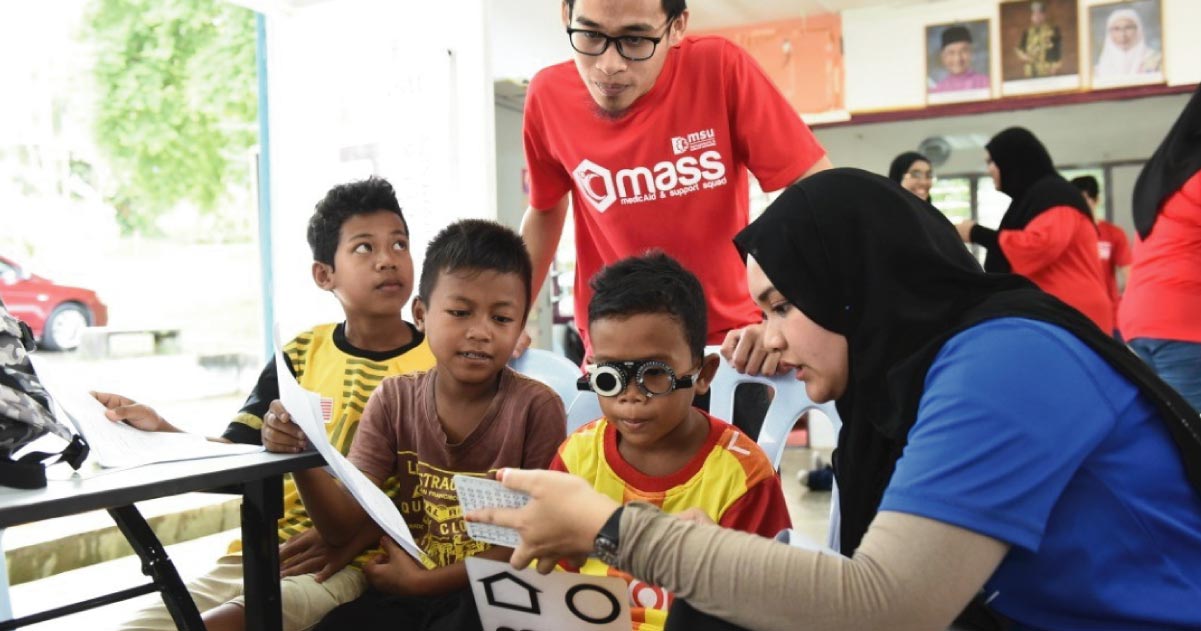

Whilst perfect vision is scored as 20/20 – a visual acuity measured by one’s ability to identify letters or numbers on a standard eye chart from a distance of twenty feet (a little over six metres), Vision 2020 is a global initiative established with the goal of eliminating preventable blindness by the year 2020.

And listed among the major causes of blindness in the Right to Sight or the V2020 joint initiative by the World Health Organization (WHO) and the International Agency for the Prevention of Blindness (IAPB) is refractive error.
Causing blurred vision that may lead to blindness when left untreated, refractive error occurs as myopia (near-sightedness), hyperopia (far-sightedness), astigmatism (caused by an irregularly curved cornea), and presbyopia (difficulty in reading or seeing at arm’s length).
Refractive errors and low vision
Normal sight is enabled when light entering the pupil is focused by the cornea and the crystalline lens onto the retina.
In myopia, where the eyeball is too long or the focusing power of the lens or the cornea is too high, the entering light focuses in front of the retina. Correcting it requires a concave or a ‘minus power’ lens.
Hyperopia involves the eyeball being too short or the focal power of the lens/cornea being too low, in which case the entering light focuses behind the retina. It is a less common condition yet still treatable by a corrective convex or a ‘plus power’ lens.
When the cornea or the lens is more curved in one direction than another in astigmatic condition, the entering light focuses at different points in front of and behind the retina. Whether occurring since birth, or caused by post-traumatic corneal scars, growth on the eyelid pressing onto the globe, or allergic conjunctivitis (causing itchiness that prompts a scratching and a pressing on the eyelid), astigmatism can be corrected by a cylindrical lens.
Low vision is defined by the World Health Organization as below 6/18 visual acuity and equal to or better than 3/60 in the better eye with best correction. A corrected vision of 20/200 in the better-seeing-eye renders the owner as legally blind.
Signs and symptoms of refractive errors in children
Children below two may appear cross-eyed, tend to bring objects very close to their eyes, or come closer to the objects (such as the television). Abnormal head postures (AHPs) that they adopt to improve vision, such as a face turn, a head tilt, or a chin lift, may indicate astigmatism. Older children may be squinting or decreasing the eye aperture when looking at distanced objects, and may still display AHPs.
School-going children may be complaining of headache, eye strain, or plain inability to see clearly in the classroom. Their poor eyesight could be the culprit behind a reduced school performance.
Sharp increase in refractive errors among Malaysian children
Refractive errors may be inherited or result from premature birth, and can occur at any age. According to the Myopia and High Myopia Impact Report by WHO and Brian Holden Vision Institute, 2015, myopia and high myopia were respectively estimated to affect 27 percent (1,893 million) and 2.8 percent (170 million) of the world population in 2010. Myopia is most prevalent in East Asia; with China, Japan, the Republic of Korea, and Singapore recording approximately 50 percent lower prevalence, and lower still in Australia, Europe, and North as well as South America.
A population-based cross-sectional 2003 survey done in the Gombak District reports overwhelming cases of myopia; 87 percent of students with reduced visual acuity had myopia, and half of them who needed refractive corrections were without glasses.
The high prevalence of myopia among Asians may be attributed to genetics but the steep increase in the number of cases may also be owed to factors such as excessive use of gadgets, reduced sun exposure, increased indoor-time, and late intervention for correction.
A common misperception among parents in Malaysia delaying treatment in their children is a fear of glasses further deteriorating the already declining vision. The fear is unfounded as clear visual stimulation is especially needed for children to develop to their full potential. Early treatment will also help prevent amblyopia or lazy eyes.
Hoax eye-drops and/or products sold over-the-counter or online and claiming to cure refractive errors pose dangers. Usually approved as food products, they are not medication. Their false assurance to parents will only delay prompt and proper treatment.
Treatment options for children with refractive errors
Glasses give the simplest option and carry less risk of infection as compared with contact lenses. High-powered glasses, however, can be uncomfortable to wear, warranting the use of contact lenses instead.
In China, Singapore, Hong Kong and Korea, atropine eye-drop in low concentration has been used to slow down myopia safely. However, it should only be given by ophthalmologists who must also monitor the patient’s vision power as well as eyeball length.
A special contact lens worn at night, called the orthokeratology lens, has shown promising results in slowing down progression of myopia in children. However, it has a slightly higher risk of infection as it is worn overnight and care may be lax on the hygiene aspect.
Myopia usually progresses yearly and stabilizes by the late teens to the early twenties. Past 21 years of age, if the patient’s affected eye is not still growing or changing, laser surgery can be an option.
In a concerted effort at bringing vision health’s importance into focus, Management and Science University (MSU) holds an annual MSU Eye Carnival; organized by the MSU Eye Centre, the MSU Optometry Students Club, and the Faculty of Health and Life Sciences (FHLS) Department of Optometry and Visual Science (DOVS).

With many children across the world belonging to families who cannot afford even an eye examination, blindness-prevention aid by the University reduces the statistics while helping children see better, achieve more, and excel in school.

Eye Carnival advances University cause for sight
MSU Congress of Optometry and Vision Research (COVR)
MSU Bachelor of Optometry (Hons)
MSU Diploma in Ophthalmic Dispensing
Whilst perfect vision is scored as 20/20 – a visual acuity measured by one’s ability to identify letters or numbers on a standard eye chart from a distance of twenty feet (a little over six metres), Vision 2020 is a global initiative established with the goal of eliminating preventable blindness by the year 2020.

And listed among the major causes of blindness in the Right to Sight or the V2020 joint initiative by the World Health Organization (WHO) and the International Agency for the Prevention of Blindness (IAPB) is refractive error.
Causing blurred vision that may lead to blindness when left untreated, refractive error occurs as myopia (near-sightedness), hyperopia (far-sightedness), astigmatism (caused by an irregularly curved cornea), and presbyopia (difficulty in reading or seeing at arm’s length).
Refractive errors and low vision
Normal sight is enabled when light entering the pupil is focused by the cornea and the crystalline lens onto the retina.
In myopia, where the eyeball is too long or the focusing power of the lens or the cornea is too high, the entering light focuses in front of the retina. Correcting it requires a concave or a ‘minus power’ lens.
Hyperopia involves the eyeball being too short or the focal power of the lens/cornea being too low, in which case the entering light focuses behind the retina. It is a less common condition yet still treatable by a corrective convex or a ‘plus power’ lens.
When the cornea or the lens is more curved in one direction than another in astigmatic condition, the entering light focuses at different points in front of and behind the retina. Whether occurring since birth, or caused by post-traumatic corneal scars, growth on the eyelid pressing onto the globe, or allergic conjunctivitis (causing itchiness that prompts a scratching and a pressing on the eyelid), astigmatism can be corrected by a cylindrical lens.
Low vision is defined by the World Health Organization as below 6/18 visual acuity and equal to or better than 3/60 in the better eye with best correction. A corrected vision of 20/200 in the better-seeing-eye renders the owner as legally blind.
Signs and symptoms of refractive errors in children
Children below two may appear cross-eyed, tend to bring objects very close to their eyes, or come closer to the objects (such as the television). Abnormal head postures (AHPs) that they adopt to improve vision, such as a face turn, a head tilt, or a chin lift, may indicate astigmatism. Older children may be squinting or decreasing the eye aperture when looking at distanced objects, and may still display AHPs.
School-going children may be complaining of headache, eye strain, or plain inability to see clearly in the classroom. Their poor eyesight could be the culprit behind a reduced school performance.
Sharp increase in refractive errors among Malaysian children
Refractive errors may be inherited or result from premature birth, and can occur at any age. According to the Myopia and High Myopia Impact Report by WHO and Brian Holden Vision Institute, 2015, myopia and high myopia were respectively estimated to affect 27 percent (1,893 million) and 2.8 percent (170 million) of the world population in 2010. Myopia is most prevalent in East Asia; with China, Japan, the Republic of Korea, and Singapore recording approximately 50 percent lower prevalence, and lower still in Australia, Europe, and North as well as South America.
A population-based cross-sectional 2003 survey done in the Gombak District reports overwhelming cases of myopia; 87 percent of students with reduced visual acuity had myopia, and half of them who needed refractive corrections were without glasses.
The high prevalence of myopia among Asians may be attributed to genetics but the steep increase in the number of cases may also be owed to factors such as excessive use of gadgets, reduced sun exposure, increased indoor-time, and late intervention for correction.
A common misperception among parents in Malaysia delaying treatment in their children is a fear of glasses further deteriorating the already declining vision. The fear is unfounded as clear visual stimulation is especially needed for children to develop to their full potential. Early treatment will also help prevent amblyopia or lazy eyes.
Hoax eye-drops and/or products sold over-the-counter or online and claiming to cure refractive errors pose dangers. Usually approved as food products, they are not medication. Their false assurance to parents will only delay prompt and proper treatment.
Treatment options for children with refractive errors
Glasses give the simplest option and carry less risk of infection as compared with contact lenses. High-powered glasses, however, can be uncomfortable to wear, warranting the use of contact lenses instead.
In China, Singapore, Hong Kong and Korea, atropine eye-drop in low concentration has been used to slow down myopia safely. However, it should only be given by ophthalmologists who must also monitor the patient’s vision power as well as eyeball length.
A special contact lens worn at night, called the orthokeratology lens, has shown promising results in slowing down progression of myopia in children. However, it has a slightly higher risk of infection as it is worn overnight and care may be lax on the hygiene aspect.
Myopia usually progresses yearly and stabilizes by the late teens to the early twenties. Past 21 years of age, if the patient’s affected eye is not still growing or changing, laser surgery can be an option.
In a concerted effort at bringing vision health’s importance into focus, Management and Science University (MSU) holds an annual MSU Eye Carnival; organized by the MSU Eye Centre, the MSU Optometry Students Club, and the Faculty of Health and Life Sciences (FHLS) Department of Optometry and Visual Science (DOVS).

With many children across the world belonging to families who cannot afford even an eye examination, blindness-prevention aid by the University reduces the statistics while helping children see better, achieve more, and excel in school.

Eye Carnival advances University cause for sight
MSU Congress of Optometry and Vision Research (COVR)
MSU Bachelor of Optometry (Hons)
MSU Diploma in Ophthalmic Dispensing